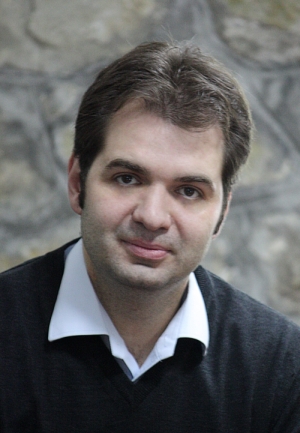|
Monday, 14. July 2025
|
|
Sfântu Gheorghe (Hungarian: Sepsiszentgyörgy) is the most significant city of the historical Three Chairs region (Hungarian: Háromszék), today being the seat of Covasna County. Furthermore it is Transylvania’s largest city with a Hungarian majority. Sfântu Gheorghe (Sepsiszentgyörgy) has been destroyed several times throughout its history. During the Mongol invasion of 1658 and the 1661 Turkish invasion most of the buildings were destroyed and, as a consequence, only a fraction of the population survived. According to the records extant from the late Middle Ages the market town’s population has witnessed great difficulties: seventeen-month drought, famine and plague epidemic decimated the population. During the reign of Maria Theresa, on the grounds of a decree of the Empress, the Seklers were enrolled in border guard units, soldiers were drafted by force and the ones refusing service were facing long imprisonment. The population of Sfântu Gheorghe (Sepsiszentgyörgy) was not only incumbent on the heavy burden of military service, but also on maintaining the military. All the above mentioned facts can partly explain the enthusiasm accompanying the participation of out town in the Hungarian Revolution of 1848. In addition, the Revolution of 1848 has been one of the most important periods in the history of Sfântu Gheorghe (Sepsiszentgyörgy). Today’s County Library is the building where Gábor Áron’s famous assertion, “There will be cannon”, has been uttered. Gábor Áron was a legendary figure of the 1848 Revolution who contributed a great deal to the temporary success of the defensive battle with his cannons fabricated in the foundries from the Three Chairs region (English translation of Háromszék). Our town was visited by General Bem Józef himself; nevertheless the 1848 Revolution was soon defeated by the Austrian and Russian troops. The Revolution was followed by a period of brutal repression when unfortunately the full archive of Háromszék was destroyed; Sfântu Gheorghe (Sepsiszentgyörgy) could barely manage to save something from its own archive. It is really shocking to know that the archives’ massive volumes were used by the Austrian and Russian soldiers as paving stones on the moody streets of the city. During this period Sfântu Gheorghe (Sepsiszentgyörgy) had to pay a considerable military indemnity; in addition asset confiscations and imprisonments were of everyday occurrence. Life and normality returned only after the fall of the Bach system when the city was able to move forward again after a long period of underdevelopment. The city’s first mayor and the local council was elected in 1861. Afterwards came a swift recovery: the famous Székely Mikó College was built, the Székely National Museum was established and a hospital and an orphanage was also set up. Furthermore, Sfântu Gheorghe (Sepsiszentgyörgy) was the first city from Seklerland with a weaving mill, and it was also the first settlement from Háromszék with electric power service. Moreover the first permanent Rococo style stage was inaugurated in Sfântu Gheorghe (Sepsiszentgyörgy), being the third stage in Transylvania, after Cluj Napoca (Kolozsvár) and Dej (Dés). We have thus established the first Sekler theater. The total number of households is 21,069 out of which 99% have electricity, 95% have potable water system and 67% of the households are connected to the sewerage system. Furthermore the city has a sports hall, athletics track, tennis courts, a beach, an indoor swimming pool and two ski slopes in the nearly Băile Şugaş (Sugásfürdő). Among the cultural institutions the most important ones are the Tamási Áron and Andrei Mureşanu theaters, the Háromszék Folk Dance Group, the Székely National Museum, the Gyárfás Jenő Art Gallery, the Bod Péter County Library, Magam Contemporary Art Medium and the “Míves” House. There is 1 day nursery, 7 kindergartens, 8 day care homes, 3 primary and 7 elementary schools in the city of Sfântu Gheorghe (Sepsiszentgyörgy). The secondary education takes place in 5 theoretical high schools and another 5 technical colleges. The oldest one of these institutions is the Székely Mikó College. Higher education also takes place in Sfântu Gheorghe (Sepsiszentgyörgy), at the Faculty of Business Administration, the Faculty of Environmental Sciences and the Faculty of Political, Administrative and Communication Sciences of the Cluj Napoca (Kolozsvár) based Babeş–Bolyai University. Industrialization began in our town after the Austro-Hungarian Compromise of 1867 with the establishment of the first Sekler Weaving Factory. The Tobacco Factory started its functioning some time later, in 1879. With the establishment of the Braşov-Târgu Secuiesc (Brassó-Kézdivásárhely) and Miercurea Ciuc (Csíkszereda) railway (1891-1897) Sfântu Gheorghe (Sepsiszentgyörgy) also latched on to the national railway network. The Olt Bridge was built in 1905 and the city’s electric power service had got going in 1908. The 70’s of the 20th Century gave scope to subsequent major investments, the Socialist leadership from Bucharest establishing several heavy industrial plants in our town. The most significant out of these were the plant manufacturing auto spares and single-purpose machines and the plant manufacturing automotive electrical parts and electric motors. The furniture and plastic factory started its production by this time as well. During the early 90’s the planned economy was replaced by the market-oriented economy this meaning the closure of many industrial units. The recent years have been characterized by greenfield, light industrial (ready made clothing cardboard manufacturing and textiles) and construction investments brought into effect mainly with foreign capital. Furthermore, Băile Şugaş (Sugásfürdő) has designated hiking paths that are passable all year round. In addition, it is an exciting, exquisite place for winter sports enthusiasts; luminous ski-trucks and skilifts are awaiting the skiers. Tourists and visitors can choose between 1 to 3 star hotels and 1 to 2 daisy guest houses. The city’s recreational center gives several possibilities for entertainment and leisure with its indoor swimming pool, sauna and aerobics room. There are also horse-riding possibilities in the nearby villages. Moreover, there are excellent restaurants in Sfântu Gheorghe (Sepsiszentgyörgy) where visitors can get acquainted mostly with the unique flavors of the traditional Transylvanian cuisine. Pageview: 222546
|
|

